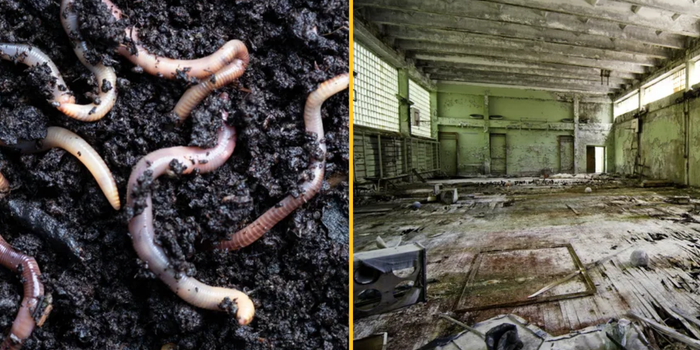Various animals and insects have continued to exist in the nuclear zone since the 1986 disaster.
Scientists have discovered an incredible new “super power” that worms living in Chernobyl appear to have.
A group of scientists from New York University travelled to Ukraine to investigate nematodes – tiny, microscopic worms that can’t be seen by the naked eye.
The researchers gathered the worms from soil samples, rotting fruit and other materials and then brought them back to their laboratory in the US to freeze and study them.
They tested the worms against various levels of radiation varying from low levels found in large cities, to high levels that are typically only found in outer space.
Their findings suggested that this particular species of worm had developed a new ability thanks to their lifetime spent in the vicinity of the Chernobyl plant.
The results showed that these worms had evolved to form an immunity to radiation.
The findings from this study has given scientists hope that information on how these worms react to radiation exposure could lead to new insights in human cancer research.
Unlike other animals that have been studied — including wild wolves that have developed cancer-resilient genomes — the worms have simple genomes and live short lives, allowing the scientists to study multiple generations over a short period of time.
Sophia Tintori, one of the researchers who conducted the study, told the New York Post: “Chernobyl was a tragedy of incomprehensible scale, but we still don’t have a great grasp on the effects of the disaster on local populations.”
She added: “Did the sudden environmental shift select for species, or even individuals within a species, that are naturally more resistant to ionizing radiation?”
The Chernobyl Nuclear Power Plant explosion in 1986 made the eastern-European city one of the most radioactive landscapes on the planet.
Scientists have studied the effects of the disaster on plants and animals for over thirty years.
One particular case study looked into the rise in the population of feral dogs in the area around the plant.
The results showed that dogs located around Chernobyl and in the nearby city of Pripyat are genetically distinct from other free-breeding and purebred dog populations.
Dr Tintori expanded on the findings of her team’s research: “The exciting discovery does not mean Chernobyl is safe, but suggests the worms are resilient animals which can withstand extreme conditions. Twenty genetically different worms were tested for their DNA damage to see if they had an unusual capacity to protect and repair their genetic material.
“He said the findings suggested that animals in Chernobyl were not necessarily more tolerant or had evolved, but that the discoveries could lead to a better understanding of natural variation.”
It’s important to clarify that the discovery made by this team of scientists does not mean Chernobyl is safe.
Instead, it suggests the worms in the abandoned city are resilient animals which can withstand extreme conditions and high levels of radiation.
Related links:
Live worm found in woman’s brain in world first discovery
Man trying to ‘hot pot’ fell into Yellowstone hot spring and was completely dissolved within a day
LISTEN: You Must Be Jokin’ with Aideen McQueen – Faith healers, Coolock craic and Gigging as Gaeilge
















































